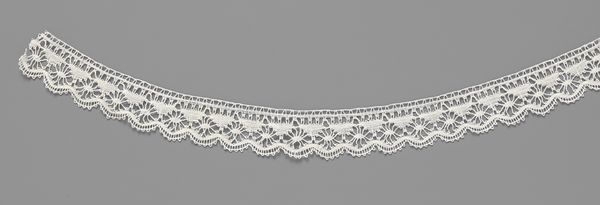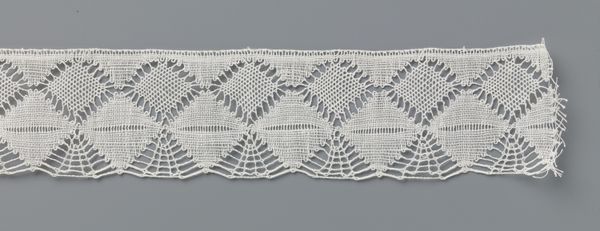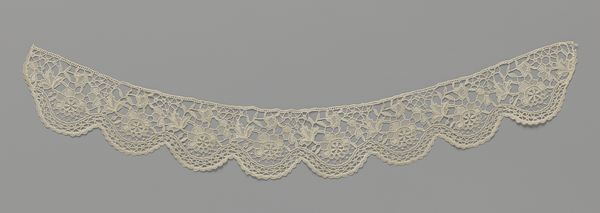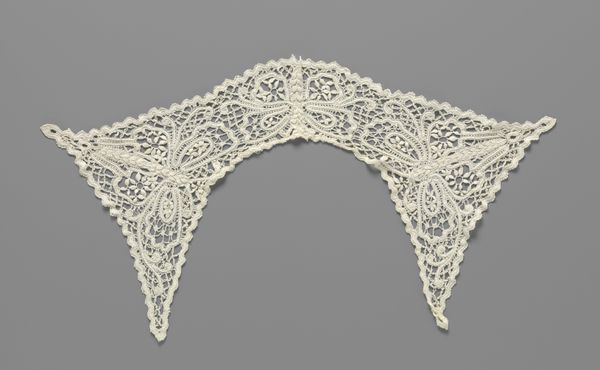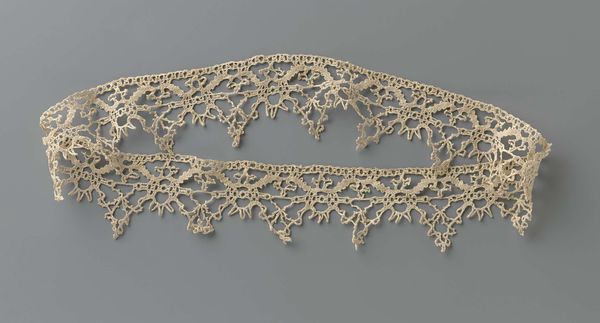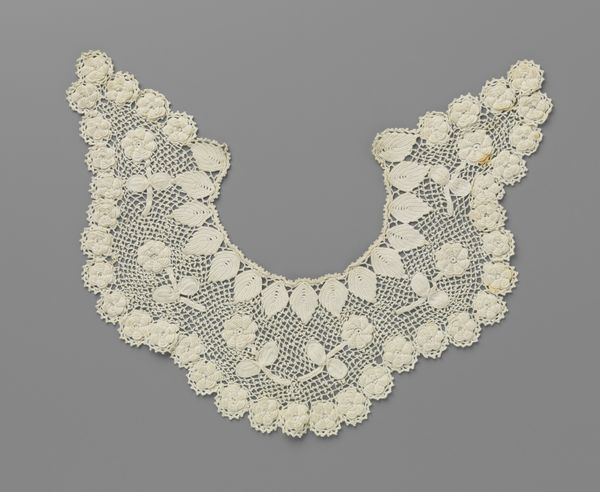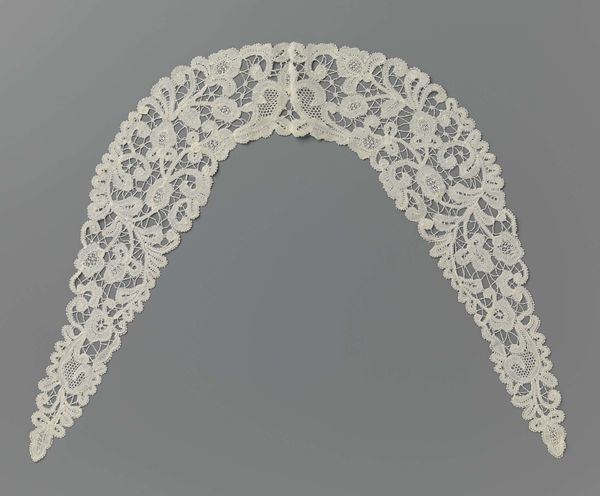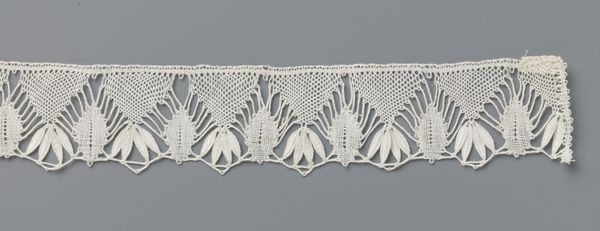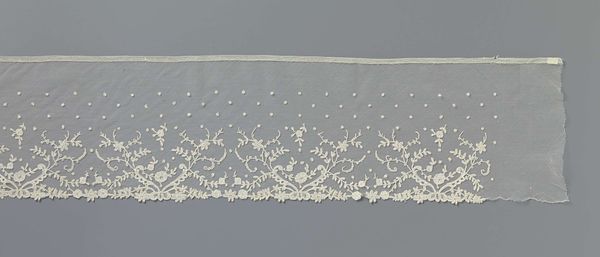
fibre-art, textile
#
fibre-art
#
textile
#
historical fashion
#
wearable design
#
decorative-art
Dimensions: length 99 cm, width 3 cm
Copyright: Rijks Museum: Open Domain
Editor: This delicate piece is entitled "Passement of strook kloskant met open boogjes," made around 1925. It's bobbin lace, so a textile. It reminds me of something very old, almost fragile. What resonates with you when you look at this piece? Curator: What strikes me immediately is how this seemingly simple lace embodies centuries of cultural memory. The repeating geometric motifs are not just decoration. Consider how lacemaking was passed down through generations of women, encoding social structures and familial bonds in each knot. Editor: So, it's not just pretty, it's a coded language? Curator: Precisely! Look closely at those open arches; in certain contexts, arches symbolize aspiration, or even protection. Now imagine this trim adorning clothing, perhaps around the neckline. What message is that wearer conveying through their choice of embellishment? Is it protection, beauty, status? Editor: It’s amazing to think something so small could carry so much meaning! I guess I never really considered lace as something other than just… lace. Curator: The absence of color also speaks volumes. The pristine white thread hints at purity, but also consider its potential to signify wealth, as keeping textiles clean was labor-intensive. Do you think its association with “purity” changes across time? Editor: That's really interesting. I hadn’t considered that before. It’s amazing how an everyday item like this lace reveals so much about the society and culture it comes from. Curator: Indeed. Everyday objects often become powerful archives of the past, and seeing them reveals a deeper cultural consciousness than one might initially think.
Comments
No comments
Be the first to comment and join the conversation on the ultimate creative platform.
